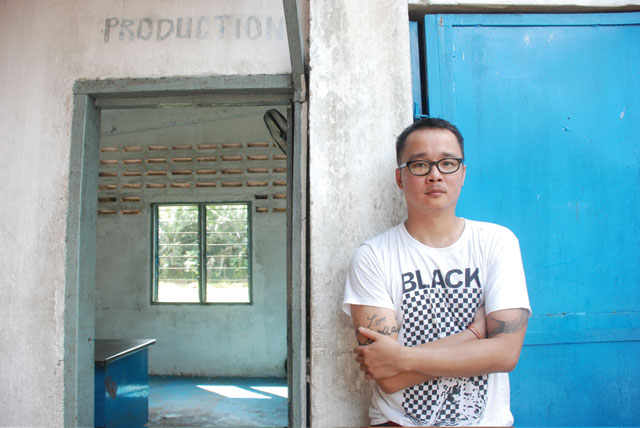His work has premiered at festivals such as the Cannes Directors’ Fortnight and has scooped prizes including Busan’s Asian Cinema Fund Prize. This month, Malaysian artist and filmmaker Chris Chong Chan Fui will be a major draw at Art Stage Singapore’s Southeast Asia Platform
Interview by Jemma Galvin
What will you be showing at Art Stage 2015?
“HEAVENHELL” is a six-channel audio-video installation to be presented for the first time in Southeast Asia at Art Stage 2015. It came about as part of a residency I joined with the Koganecho Bazaar in Yokohama, Japan. During the initial research trip, the Koganecho team and I met with a local community elder who talked about how master filmmaker Akira Kurosawa had wanted to shoot the brothel scene of his 1963 film Tengoku to Jigoku (which literally translates to “Heaven and Hell”) there but deemed it too dangerous at the time and shot it in the confines of a studio instead. After hearing this story, it immediately clicked in my head that this was our opportunity to re-shoot the brothel scene where Kurosawa had initially intended.

In your opinion, what does Art Stage, and in particular the Southeast Asia Platform, do for art in the region? Why is it important?
The Southeast Asia Platform is a curated and critical look at the mindset of the artist without the commercial constraints typical of an art fair. To ‘contain’ contemporary art within the confines of an art fair is like attempting to hold water with your bare hands. This is where the Southeast Asia Platform steps in.
I have read that your inspiration comes not from ideas, but from being ‘provoked’.
The thinking that an idea is a seed for creativity is a misconception. I believe that works come from a culmination of experiences. It’s just whether you want to express these experiences or not. It’s as simple as a conversation, but manifested in a different medium.
Issues of home, environment and belonging seem to permeate your work. What do you hope an audience takes away from experiencing the ideas you’re exploring?
I hope that anyone seeing any artwork from any artist can read between the lines. For me, the starting point has mostly been to visually present the blatant facts,
a clear, understandable image. And from this point, I want to leave gaps in between the facts in order to move the discussion elsewhere.
You work primarily with the moving image and processes of documentation. What is it about this medium that interests you?
The trick to what makes a cinematic moment is rooted in so much magic and mechanism. The reason why images move is still a mystery to me, both conceptually and physically. The curiosity heightens when you start mixing up the conventional elements of what makes a moving image, that’s when your mind drops into a wormhole and you start to question the purpose of all the elements like a static photographic image, audio recordings, inclusion of light and dark, etc. It’s endless.
You are board chair of the Borneo Eco Film Festival, which focuses on indigenous community storytelling. Why is this important to you?
Storytelling has become such a brand in itself, like it is a special skill that only certain people can undertake and only certain people can benefit from. It’s a falsity, a joke. The only condition to a good story is having the confidence to tell it.
Despite your international success, you’re still very attached to the Malaysian art scene you came from. What makes it special?
There are so many different players that are required to make an art scene vibrant, from the commercial to the public sector, that it all needs to work hand in hand in order for it to thrive. A scene is not necessarily a good thing if it doesn’t involve the greater community outside of its own friends and close supporters.
Keep reading:
“The skin I live in” – A lack of understanding of transgender issues means that hundreds of women are presented with scant employment opportunities and often turn to sex work to make ends meet

